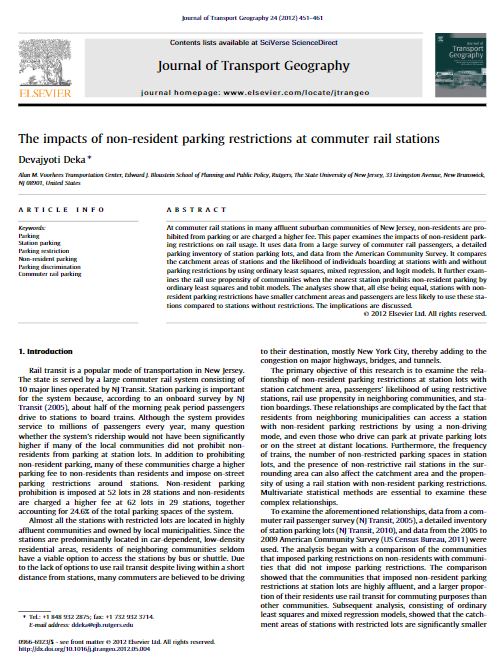Abstract
At commuter rail stations in many affluent suburban communities of New Jersey, non-residents are prohibited from parking or are charged a higher fee. This paper examines the impacts of non-resident parking restrictions on rail usage. It uses data from a large survey of commuter rail passengers, a detailed parking inventory of station parking lots, and data from the American Community Survey. It compares the catchment areas of stations and the likelihood of individuals boarding at stations with and without parking restrictions by using ordinary least squares, mixed regression, and logit models. It further examines the rail use propensity of communities when the nearest station prohibits non-resident parking by ordinary least squares and tobit models. The analyses show that, all else being equal, stations with non-resident parking restrictions have smaller catchment areas and passengers are less likely to use these stations compared to stations without restrictions. The implications are discussed.
